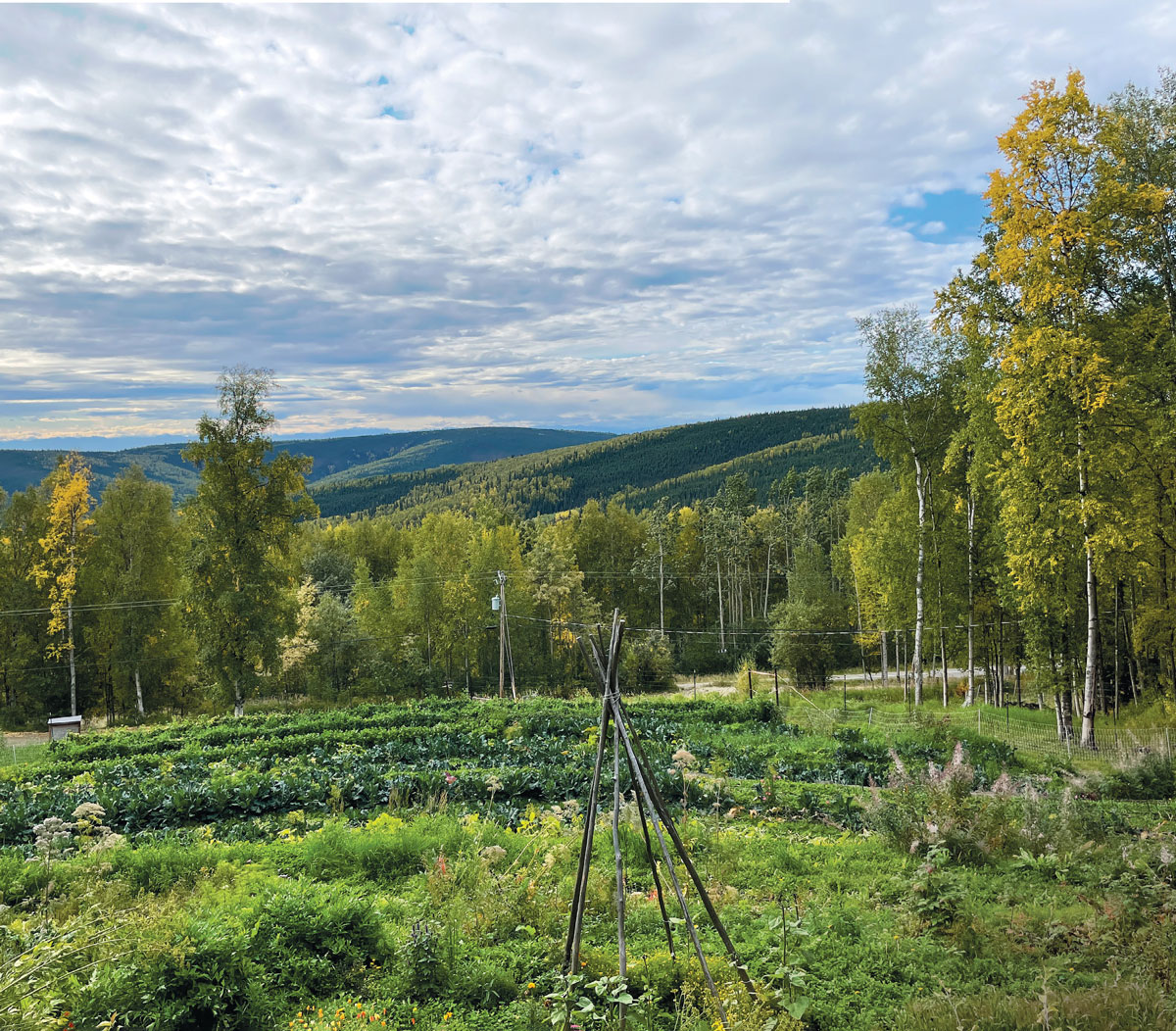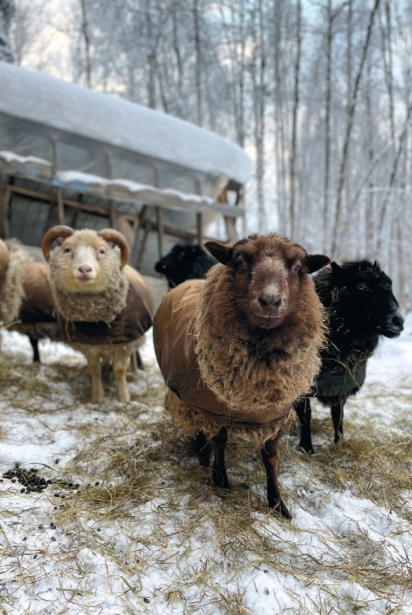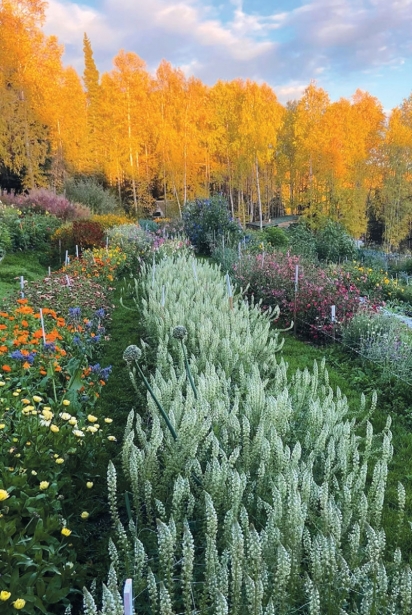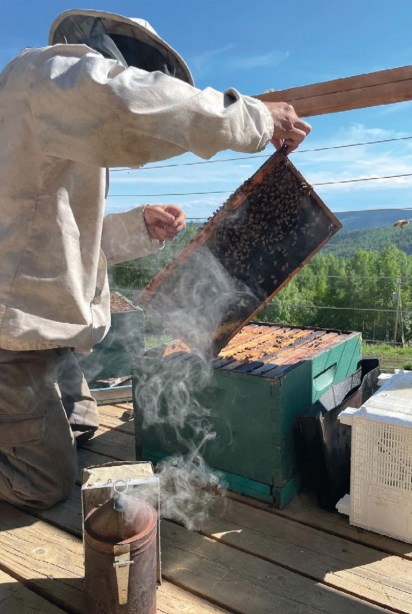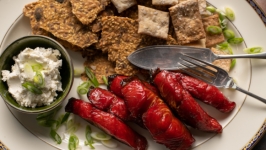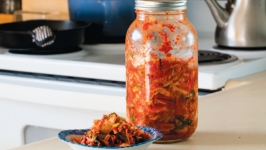Changing the Climate of Growing in Alaska
My dad and I mostly connect about two things: home improvement and gardening. He comes from a farming family in Missouri just like my mom, and he even tried his hand at it full time in the 1980s—the heart of the farm crisis. During a time when so many small farmers ceded to industrial agriculture, my father only lasted a couple of years. Growing up, we had little more than pots of herbs and a handful of tomato plants in the backyard.
In recent years, though, he’s circled back to growing food, perhaps inspired by my own attempts at gardening in the capricious climate of Alaska. He loves to turn the video chat to his seedlings or update me on his potatoes. On a recent chat in late May, he proudly displayed his first almost-ripe tomato of the season.
I, on the other hand, had just spent two months babying my tomato plants and was holding my breath that the youngsters didn’t get too frosty in the greenhouse overnight.
It’s moments like these when I daydream about growing food in a more hospitable place than the subarctic. I don’t even have real soil to plant in, just gravel under a fine layer of duff. Some nights I come home to find that a moose has snuck into my garden and chomped my cabbage to bits. Hot May days bring ice-cold nights, requiring the dance of the plant shuffle from outside to inside and back. Almost every August, a frost comes and kills the leaves on my potato plants before they can fully mature.
But some evidence suggests a change is on the horizon. Headlines teasing Alaska’s future agricultural potential pepper national news sites. Some studies predict the warmer, wetter weather of the Pacific Northwest may shift northward as climate change progresses. Overall, the growing season looks to be lengthening, winter cold receding, and the overall heat of summer increasing.
“When I first started growing here, I couldn’t grow potatoes because it frosted every month,” long-time McCarthy area gardener Mark Vail said. Now, he grows them every year. Vail said his crops grow bigger and are more productive than they used to be. That’s partly because of experience and gardening techniques like using garden cloth. But that’s not the whole story.
“The growing season in the last 35 years has probably extended ten days longer. It’s earlier in the spring and later in the fall,” Vail said.
And yet, when I talk to Mark over the phone in late May, we lament the late breakup and the recent cold, rainy weather that’s engendering timidity about planting out too soon. A few days later, it snows nearby and dips below freezing.
I haven’t been here long enough to know what’s normal, especially since trends don’t always translate to individual years. But since I started gardening in McCarthy eight years ago, I’ve witnessed stretches of extreme heat that baked my brassicas and fed my peppers, like the summer of 2019. Some years, I’ve planted in mid-May, others in mid-June. I’ve seen merciless drought followed by endless rain that kept my greenhouse doors closed and encouraged mold to proliferate. There’s been high wind, hail, and thunderstorms. Some of it is just the unpredictability of Alaska weather and the gamble of growing things in general. But Vail and other Alaska growers told me they think that unpredictability is increasing with time.
“The trend seems to be extending, but it also seems to be more erratic. We’re getting heavier rains at weird times. Last fall, we had half a year’s moisture in a month and a half,” he said. “We’re getting more erratic summer windstorms.”
Whether an extended, but more extreme, growing season translates to a better one depends on who you talk to. Vail said the change in climate is helping him grow more in Alaska’s short season overall, but it also means preparing for a range of possibilities.
Adapting to change
For Dr. Nancy Fresco, the question of climate change and agriculture in Alaska first came to her from the state’s peony growers. Alaska’s peony market hinges on flowers blooming here when they’re not blooming elsewhere. Warmer summers could push the bloom earlier and actually hurt one of Alaska’s few agricultural export markets.
“They were really interested in thinking about how climate change might impact the timing of peony flowering because the timing is really crucial to whether they can outcompete markets from elsewhere,” the University of Alaska Fairbanks researcher said. “So it’s not just can you grow beautiful peonies. It’s when do they bloom and is that at the right time to capture the wedding market.”
The question sparked conversations with other Alaska growers about preparing for an uncertain future in an already uncertain field. She started researching what the modeling actually shows about Alaska’s growing future, and what kind of information and tools could help growers prepare.
“It’s always a gamble and that gamble is shifting with climate change, but the uncertainty is still there very much. And now there’s the additional uncertainty, of course, of climate futures themselves,” Dr. Fresco said.
The data from her resulting study is clear: Alaska’s summers will grow warmer, its growing season longer, and its winters milder. And it’s already happening. In theory, that spells the ability to grow more and a wider range of crops and maybe even increase food security in Alaska. But what it means for farming in practice is less certain.
“It’s always a gamble and that gamble is shifting with climate change, but the uncertainty is still there very much. And now there’s the additional uncertainty, of course, of climate futures themselves.”
“The tricky thing, as every farmer or gardener knows, is that even with trends toward earlier planting and later harvest, more heat over the course of the summer, those are trends and you could still get kind of a cold summer or sudden frost in June. And so the uncertainty is still there, but the uncertainty is not new,” Dr. Fresco said. “That’s something any farmer has always dealt with.”
To try to help, she and a team of researchers created a tool for any Alaska grower to use. The interactive online graphs allow users to choose their region and toggle through charts of historical data and future predictions. The tool has been particularly helpful for growers new to a region, like Cayley Eller, the program manager of a community garden project in Tyonek.
“Seeing those projections and for me, actually looking at that information, was really useful because I don’t know this area very well that I’m jumping into. And so I was able to see right away what are my hard and soft frost dates and plan my crop planting around that,” Eller said.
But it also has its limitations. It doesn’t explore soil or air temperature or the possible negative impacts of climate change like extreme weather or pests. All of those factors impact the quantity of food Eller and volunteers can grow in the fly-in only village, where access to fresh produce is limited and expensive.
“We’re all kind of waiting to see how climate change is going to unfold. There’s some ease in knowing that the growing season might become longer. But that comes with pests and diseases and other challenges,” Eller said. “That’s going to probably be the biggest thing, is drought will be difficult if we experience that. We don’t have really sophisticated irrigation systems.”
Which is why long-time grower Susan Willsrud of Calypso Farm & Ecology Center in Fairbanks sees preparation and diversity as keys to thriving in a changing climate. She does think the lengthening growing season has allowed some growers to introduce new crops, but overall, she’s witnessed more extreme weather patterns.
To help, the farm recently installed a new watering system to help with drought, and plans to build a better-insulated seed starting house for cold spring seasons like this year’s. They also continue to reduce their own carbon footprint and plant as many different crops and varieties as possible.
“If you grow that much diversity of crops and varieties, there’s always going to be something that does well and something that doesn’t,” Willsrud said. “We’re looking at natural systems and the diversity that exists in them and how that creates balance. It’s harder to juggle 500 varieties and market all the different crops, but it’s built into our model. With the changing environment, I believe that it makes more resilience.”
Resiliency—the tools and the preparation to adapt, whether it’s to a rainless summer or a late spring frost—might be the word we’re all looking for in an uncertain growing future. It may never be as easy to grow an Alaska tomato as a Missouri one. But, for me, it’ll always be worth the sweet, tangy taste after months of care and attention.
This story originally appeared in Issue No. 29, Fall 2023


